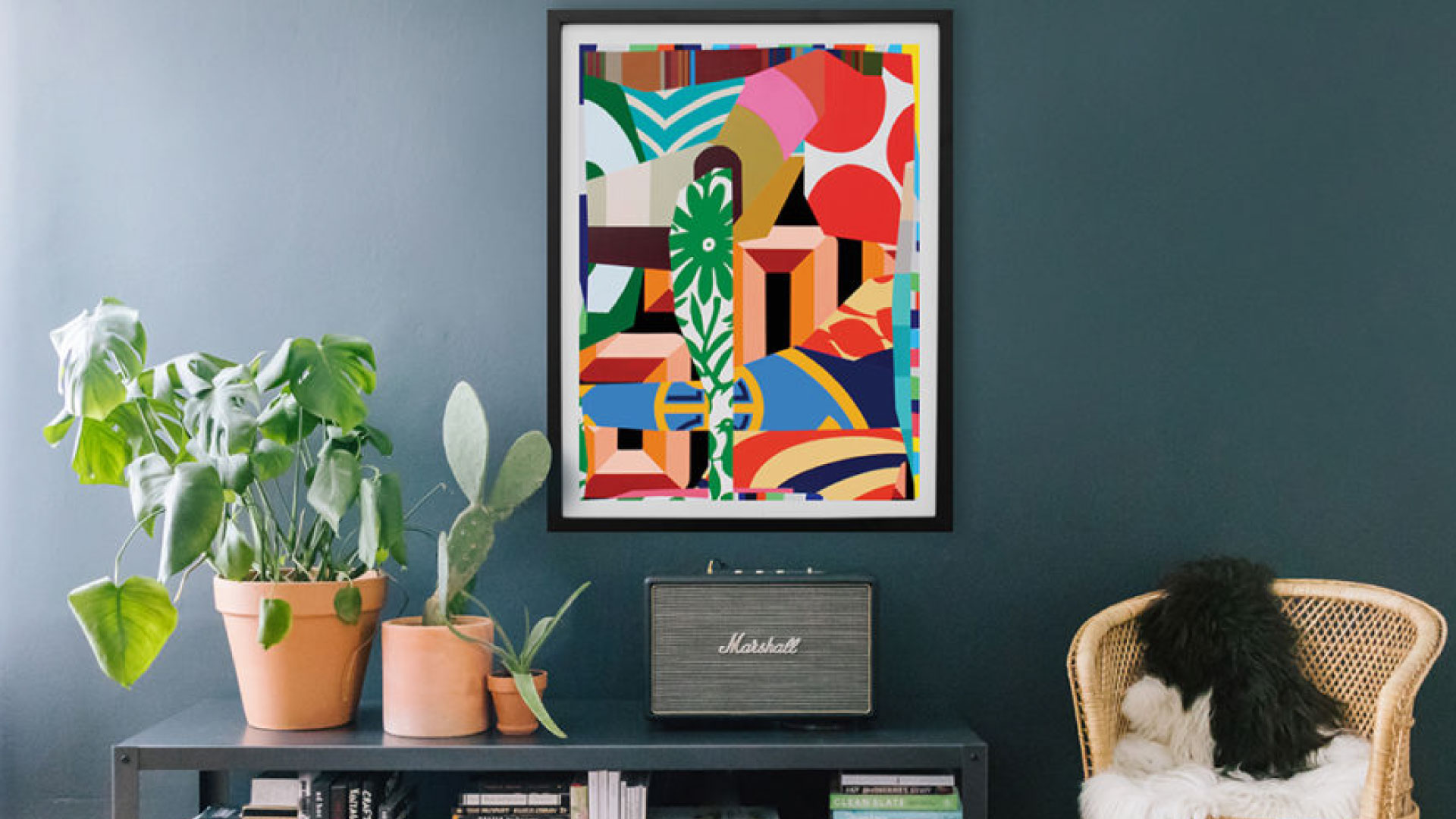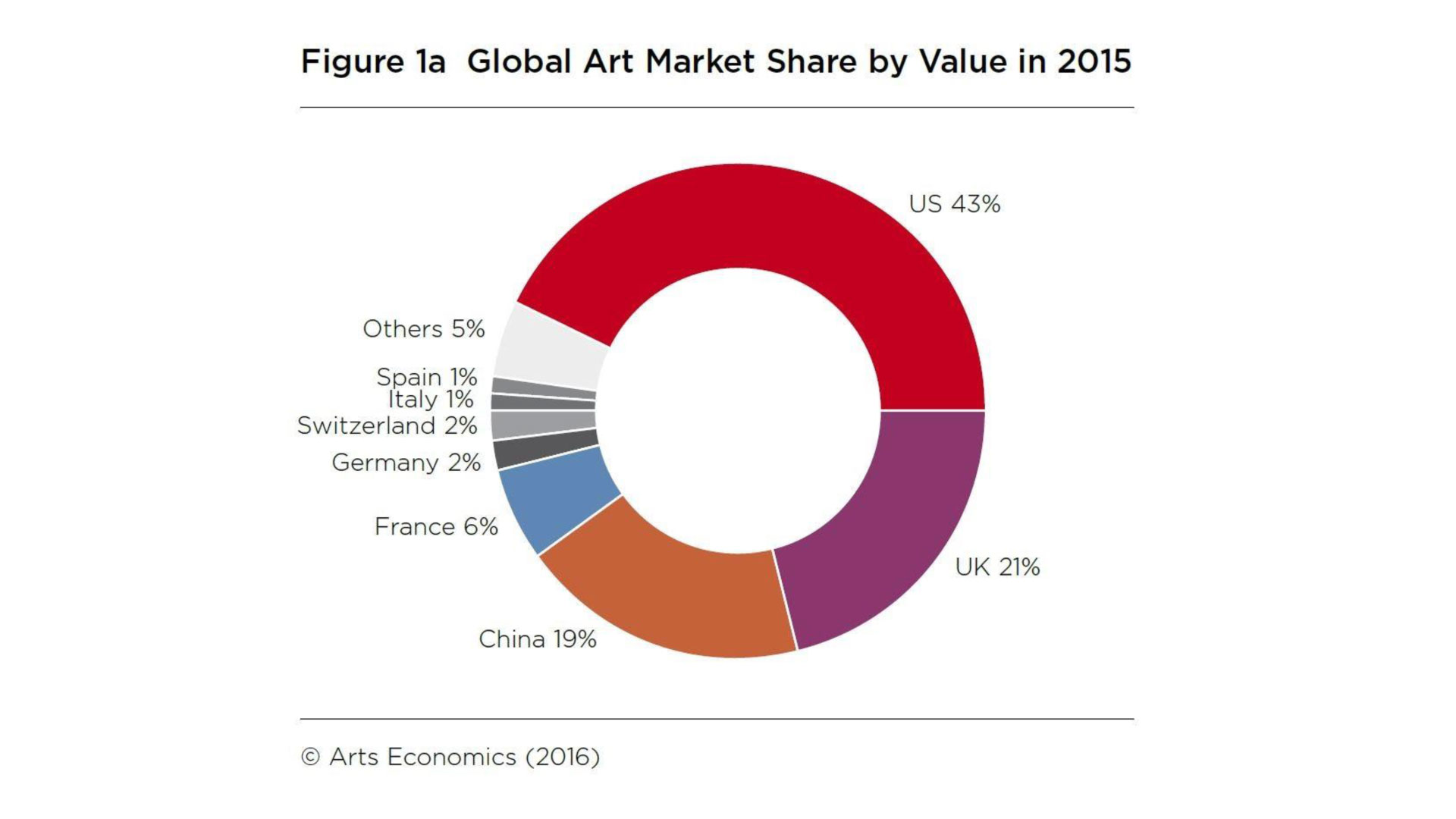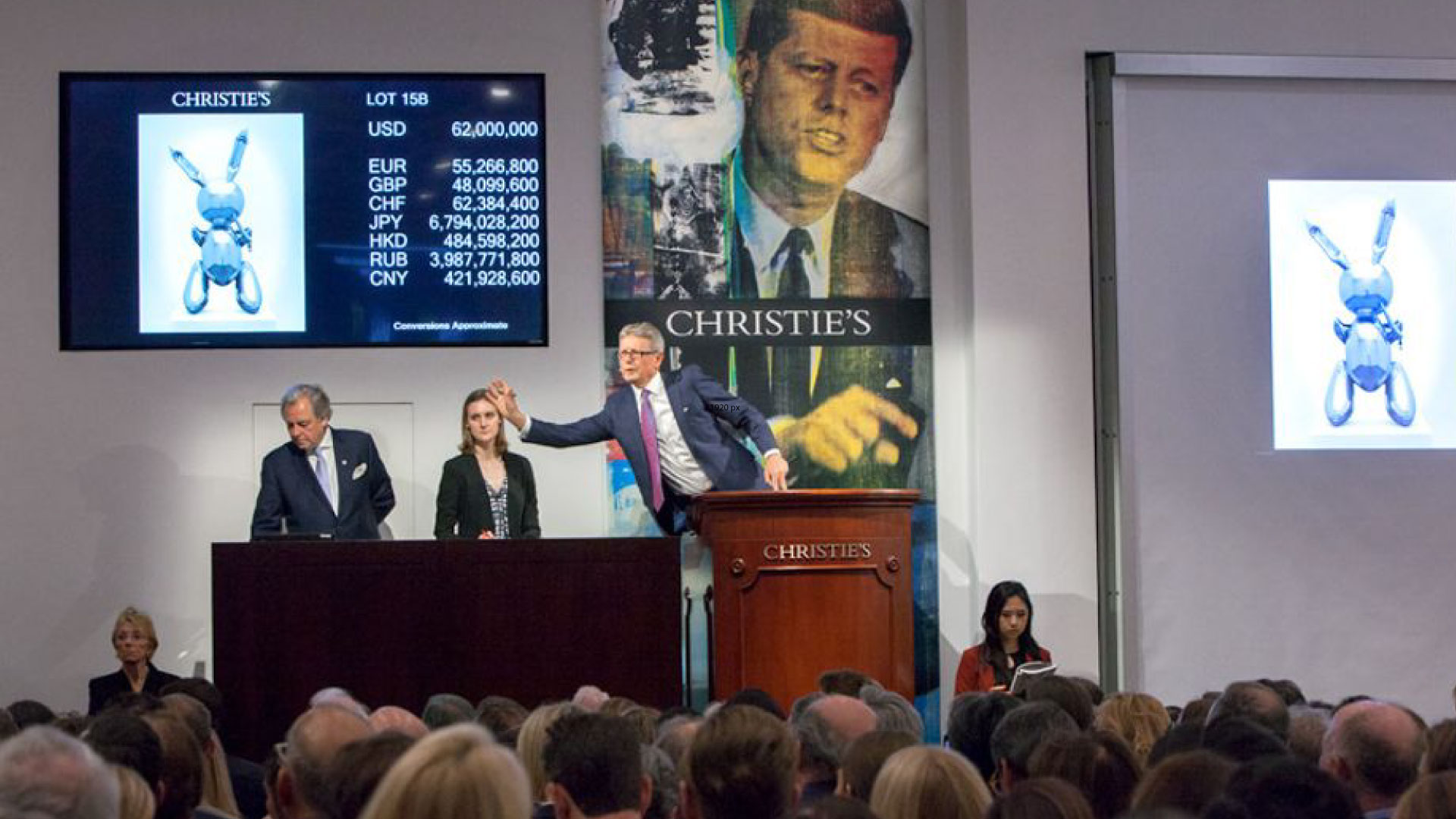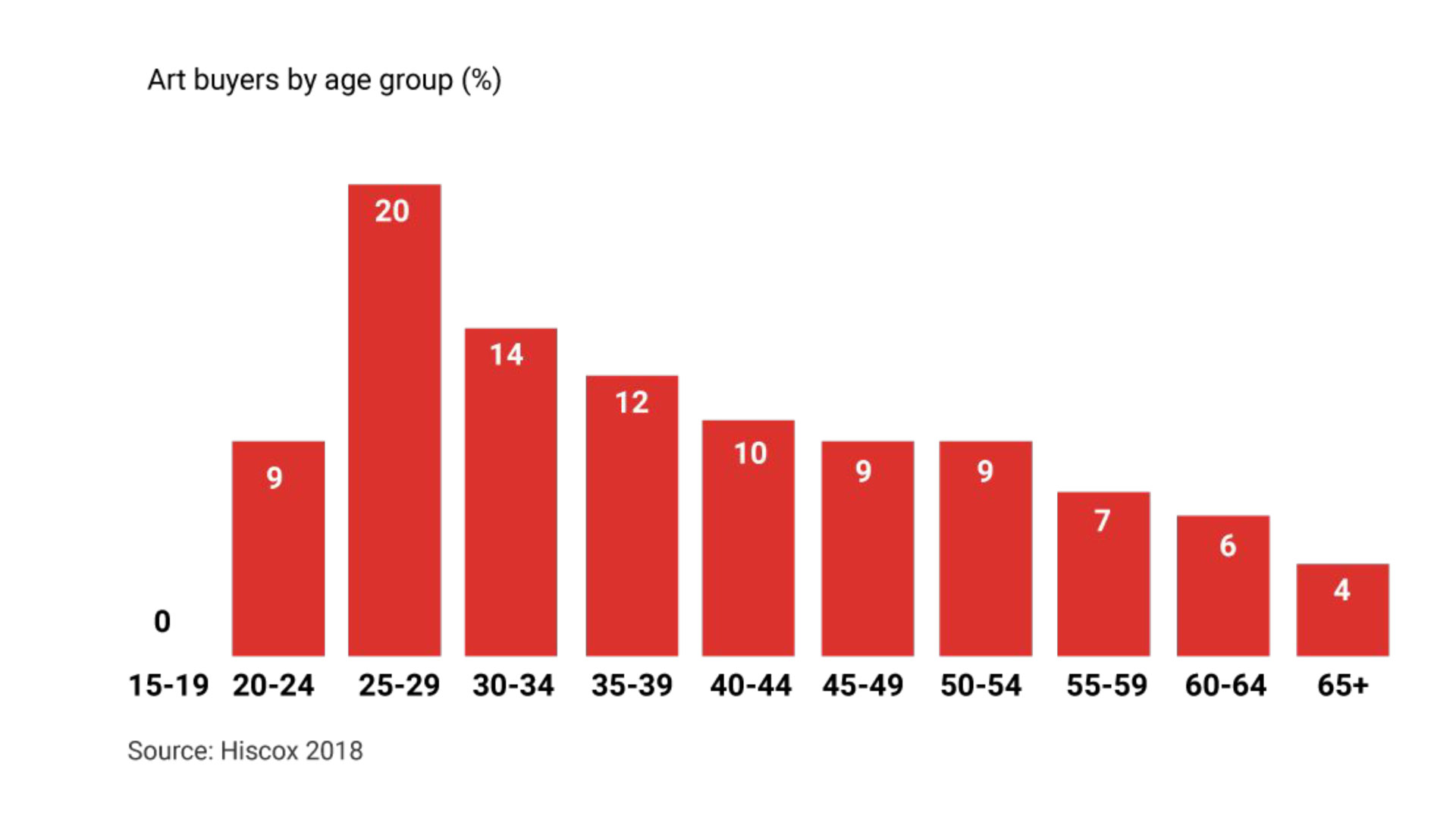
Most people agree that no room is complete without art. Art is a form of communication and the way people decorate their homes or business powerfully influences mood, thoughts and behaviour. The presence of artwork can create a welcoming feeling, reinforce positive emotions, trigger curiosity and bring back memories, something that a blank and flat wall doesn’t do.
"Art plays a prominent role in adding the finishing touch to a room. Placing original art harmoniously into an interior makes the space feel complete and personal to you."
Rebecca Wilson, Chief Curator and VP Art Advisory at Saatchi Art
Due to the internet, artwork has become more accessible to a wider range of buyers and has opened up entrepreneurial opportunities for digital retailers.
Market Potential
The value of the art market has been growing during the last few years. Since the crisis in 2008, we have consistently seen a thriving market. The market share is divided globally, where the US has the largest market followed by the UK and China. In Europe, the UK has more than 60% of the market, followed by France and Germany.

Online sales trend
Based on the Hiscox Online Art Trade Report 2018 , online market sales exceeded 4 billion dollars in 2017. Online art sales have been consistently growing and the forecast for the next years continues to be positive, due to the expansion of a number of online auctions and ecommerce platforms. As an example of this trend, Christie’s , a 250-year-old auction house launched its own mobile app in 2010.
The art market is thriving and has exciting potential, where the USA, UK and China are the biggest marketplaces. As well as that, online art sales have shown an upward trend and have been consistently growing.

Who buys art?
There are basically three different groups of people who purchase art. Firstly there are beginners or occasional buyers who just spend a few dollars and are more likely to buy prints and posters. The second group consists of people who are more interested and more knowledgeable about art, who want to buy original artwork and are prepared to spend more money. Finally, there are the professional collectors, investors and corporate buyers who have very specific requirements paired with a higher spending power.
Online art buyers behavior
The Hiscox Online Art Trade Report 2018 survey found that nearly 22.7% of art buyers discover new artworks via social media, which has taken over museums (20%) and galleries (15.9%). Online buyers are purchasing art as a unique experience and the buying decisions are highly influenced by emotional connections.
It also shows that 40% of visitor traffic and 24% of bids came via mobile devices. This confirms the importance of having a fully responsive website.
Hiscox 2018 also reports that Instagram has taken over Facebook and has become the favourite social media platform for the art industry. The art buyers use Instagram as a way to learn more about art and to follow artists which often leads to an emotional connection with some of them.
“Instagram has emerged as a more democratic platform for art, offering unparalleled access to those whose pockets are not as deep as their enthusiasm for art”.
Simon Davies on Tech.Co.
The reason for buying art on line
In 2017, Creativehub surveyed 10.000 internet users to ask them about their motivation for buying art online. The two biggest drivers of online purchases are: Aesthetics and matching with home style and décor (53%) and the emotional context at the point of purchase(41%) which is the way how the buyer engages with the artwork. The survey also shows that the most important reason for people not buying more art online is affordability (60%) and lack of time (24%). For the UK market, affordability for many art buyers means under £250,00.

Age demographics
There is a new generation of art buyers, aged between 20-35 who are leading online art purchasing.
Approximately 43% of buyers surveyed belonged to Generation Y (also termed “millennials”). Furthermore, the age range of 25-29 year olds alone represented a significant 20% of all buyers. They represent a big share of the market and understanding their behaviour and motivations are key aspects to communicate effectively with them.

79% of online art buyers under 35 use social media to discover new artists, while 82% use it to keep updated on artists who they are already familiar with. Overall, 43% of Gen Y buyers are reported to be influenced by social media when buying art.
Most of the millennial art buyers surveyed (92%) cited an emotional connection as a motivating factor for buying art. For instance, millennial couples, commonly look for a unique experience in a form of a piece of art that represents them as a couple.
Conclusion
Analysing the available data about online potential buyers and the market features is key in developing proper communication between the artists and potential customers.
Due to more affordable prices and the accessibility which the online market gives, we are seeing an increase in first time art buyers. Many of them don’t have deep knowledge and education about art and the way how to present it cannot be intimidating like it traditionally is in art galleries. It must be presented in a simplistic, dynamic and objective way.
Young collectors don’t just want to buy art, they also want to know more about the art world, artists and to get involved. That is why it is important to create a genuinely engaging experience.

